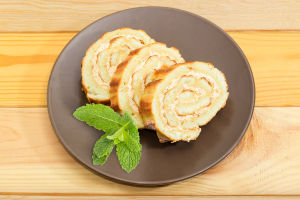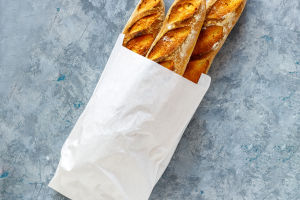Bread is a staple food that has been enjoyed by people around the world for centuries. Its versatility, comforting aroma, and delicious taste make it a favorite in many cultures. Whether it's a crusty baguette, a fluffy dinner roll, or a hearty whole-grain loaf, good bread can elevate any meal and satisfy even the most discerning palates.
One of the fundamental elements of good bread is high-quality ingredients. Start with good flour, whether it's all-purpose, bread flour, or a specific type like whole wheat or rye. Fresh yeast or active dry yeast will provide the necessary leavening, and using filtered water will ensure a clean, neutral taste. Additionally, adding a touch of salt helps to enhance the flavor and control fermentation.
The process of making good bread involves several key steps. The first is mixing the ingredients together to form a dough. This can be done by hand or with the help of a stand mixer. When kneading the dough, aim for a smooth and elastic texture. This helps develop the gluten, which gives bread its structure and chewiness. The dough should be slightly sticky but not overly wet.
After kneading, the dough needs time to rise and ferment. This is called the bulk fermentation phase. Place the dough in a lightly oiled bowl, cover it with a clean cloth, and let it rise in a warm, draft-free place until it has doubled in size. This can take anywhere from one to several hours, depending on the recipe and ambient temperature.
Once the dough has risen, it's time to shape it. Gently deflate the dough and shape it into the desired form, whether it's a boule, a baguette, or a roll. Pay attention to the surface tension and make sure there are no air pockets trapped inside. Place the shaped dough on a baking sheet or in a loaf pan, cover it with a cloth, and let it rise again until it's visibly puffy.
The final step in bread-making is baking. Preheat your oven to the appropriate temperature, usually around 400-450°F (200-230°C). Before placing the dough in the oven, you can enhance the crust by scoring it with a sharp razor blade. This allows the steam to escape during baking, resulting in a crisp and beautiful crust.
While baking, keep an eye on the bread. It should develop a golden brown color and sound hollow when tapped on the bottom. The baking time will vary depending on the size and type of bread, so refer to your recipe for specific guidance. Once baked, remove the bread from the oven and let it cool on a wire rack. This allows the moisture to escape, preventing a soggy bottom.
The key to making good bread is practice and patience. Experiment with different flours, hydration levels, and fermentation times to find your preferred flavor and texture. Remember to take notes and adjust your process accordingly.
Bread-making is an ancient art that can bring joy and satisfaction to your kitchen.
By using high-quality ingredients, understanding the fermentation process, and mastering shaping and baking techniques, you can create delicious loaves of bread that will impress your family and friends. So roll up your sleeves, dust your hands with flour, and embark on a bread-making journey that will fill your home with the warm and inviting aroma of freshly baked bread.


